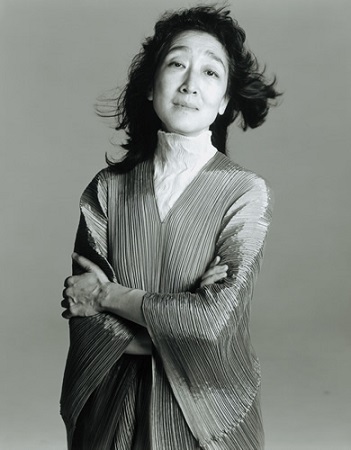 United Kingdom Schubert: Dame Mitsuko Uchida (piano), Royal Festival Hall, London, 5.12.2018. (CC)
United Kingdom Schubert: Dame Mitsuko Uchida (piano), Royal Festival Hall, London, 5.12.2018. (CC)

Schubert – Piano Sonata in E flat, D568 (?1826); Piano Sonata in A minor, D785 (1823); Piano Sonata in A, D959 (1828)
Last year, Dame Mitsuko Uchida gave two evenings of Schubert Piano Sonatas in the same week: my review of the first is here. For 2018, she presents two concerts, each containing one of the great final trilogy: on this occasion, it was the A-Major, D959; on Friday, it will be the great B flat, D960.
These are keenly awaited occasions, and the Royal Festival Hall was full and abuzz for the first half (there was notably more space for D959: perhaps because of the heavenly length of D567 and D785 combined). Despite its Deutsch number, the E flat is a mid-1820’s reworking of the Sonata in D flat, D567 of 1817. It is a remarkable work, its first movement, in Uchida’s reading certainly, markedly experimental; one could feel Schubert spreading his wings. Uchida utilised the full dynamic range of her Steinway, particularly in the magical pianissimos of the first movement development section (after a repeated exposition). One of the major strengths of Uchida’s playing is her rhythmic mastery, and this pays particular dividends in Schubert. A Lied ohne Worte opening to the second movement leads to a remarkable passage of pealing chords with supplicatory right-hand response, delivered with the utmost emotional power by Uchida. The explosion of coughing between the second and third movements thankfully did not derail her; her timing of the opening of the Menuetto was not to be moved, her playing fabulously responsive to Schubert’s added text (this movement was wholly absent in D567); the charm of the finale seemed underlined.
The area of A major/minor, a tritone away from the E flat of the first piece, dominated the remainder of the evening. A minor was a favoured key of Schubert’s, and the Sonata D785 is indeed a very personal work. The stark octaves of the opening, so beautifully phrased and weighted by Uchida, were totally unhurried, her left-hand subsequently tolling a death-knell in its deep bell-like gestures. Stark dynamic contrasts in Schubert’s panelled writing brought forth thoughts of organ writing; the first movement repeat seemed to emphasise the import of this piece. The central Andante was truly profound, not just slow, but it was the finale that capped it all, from the minor-key cat-and-mouse linear chase of the opening to Uchida’s uncompromising presentation of Schubert’s disquieting interruptions.
The late D959 is, of course, one of the towering masterpieces of the piano literature, and Uchida did it great justice. The first movement, a proper allegro, contained not just drama but also poignant silences. As the scenery passed, one could marvel at, say, Uchida’s perfect, fully-formed staccatos, but most impressive was her grasp of Schubert’s form and language. The bleak, bereft second movement – its marking of Andantino hiding a multiplicity of levels – holds that astonishing, manic outburst: as in her performance at the Wigmore in 2012 (where Uchida played the last three sonatas in one evening: click here), this was a touch muted; it has certainly been heard in more hallucinogenic colours (Imogen Cooper is absolutely raw in her live performances). Uchida’s tack is, instead, to trace a mental unravelling as an inevitable descent, painting a loss of control, even a loss of sanity. The shards of light of the Scherzo seemed perfectly matched to this reading; the rubato of the finale was perfectly judged, its harmonic twists and turns relished, the large canvas magnificently and compellingly revealed.
If there was the occasional passage of technical frailty, this remained a masterly display of Schubert interpretation the like of which is rare in the world today. Schubert’s ability to take us out of our reality into other worlds, from heavenly to nightmarish, was laid bare.
Uchida’s second concert is on Friday, December 7 and includes the great B flat Sonata, D960.
Colin Clarke